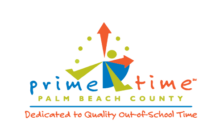9:00 am - 11:00 am
Over the last 5 years, Prime Time has helped the JASE program become a successful afterschool program in Martin County. We are thankful for the variety of trainings offered, yearly actions plans and multiple site visits.
Afterschool ProfessionalMartin County Parks and Recreation
Building a Positive Community with Teens – Part 2 – VIRTUAL
Participants are REQUIRED TO ATTEND ALL TRAININGS in the series and create and try out tailored activities in between trainings.
Part 1 – Building Positive Community with Teens – Laying the Foundation
Part 2 – Building Positive Community with Teens – Meaningful Relationships
To learn, stay engaged, and develop as individuals, teens need a safe, predictable, joyful, and inclusive space where they can experience belonging, significance and emotional safety. They also need to feel comfortable taking risks and working with their peers. How can you create such a space for the teens you work with? This lively training series explores the environment in which you work with youth and provides strategies, fun group activities, and relationship-building meeting structures that will help you establish a community that promotes positive experiences for teens.
Please note: Only afterschool practitioners working with middle school, high school, or fifth grade elementary youth should register for this training.
Participants will earn .3 CEUs for successful completion of each training session and follow-up assignment(s).
Building Positive Community with Teens – Laying the Foundation
Training Objectives
Participants will:
- Discuss the importance of belonging, significance and emotional safety for youth
- Outline the methods involved in establishing a positive community
- Utilize interactive learning structures and brain breaks that provide opportunities for youth to feel a sense of belonging and significance
Building Positive Community with Teens – Meaningful Relationships
Training Objectives
Participants will:
- Explain the Responsive Advisory Meeting structure.
- Practice developing Responsive Advisory Meetings as a way to help youth build positive relationships.
Core Knowledge, Skills and Competencies Addressed (CKSCs)
Learning Environments and Curriculum
Physical Environment and Activities
Identify – A. Recognizes the importance of creating a developmentally and culturally responsive learning environment and following a curriculum.
Identify – C. Identifies aspects of a developmentally and culturally responsive environment and learning plan.
Apply – B. Shows warmth, caring, and respect for children, youth, and others as individuals.
Apply – C. Employs schedules, routines, and structured transitions.
Apply – C. Models healthy interactions and guides children and youth in self-awareness, social awareness, relationships, and responsible decision making.
Language and Communication Development
Apply – C. Encourages children and youth to communicate in a variety of ways
Creative Expression
Apply – B. Supports individual expression, including cultural influences.
Relationships and Interactions with Children and Youth
Individual Child/Youth Guidance
Apply – A. Provides a supportive environment in which children and youth can learn and practice pro-social behaviors.
Apply – D. Practices positive, health interactions and guides children and youth in self-awareness, social awareness, relationship building, and responsible decision making.
Youth Engagement, Voice, and Choice
Apply – A. Encourages youth to express their ideas and feelings to support healthy development, meaningful relationships, and program quality.
Equity and Inclusion
Inclusive and Accessible Physical and Social Spaces
Apply – A. Creates an inclusive, welcoming, and respectful environment for all.
Primary QIS Scales Addressed:
I. Safe Environment
I-E. Creating Safe Spaces
II. Supportive Environment
II-J: Active Learning
III. Interactive Environment
III-K. Sense of Belonging
III-N: Cultivating Empathy

